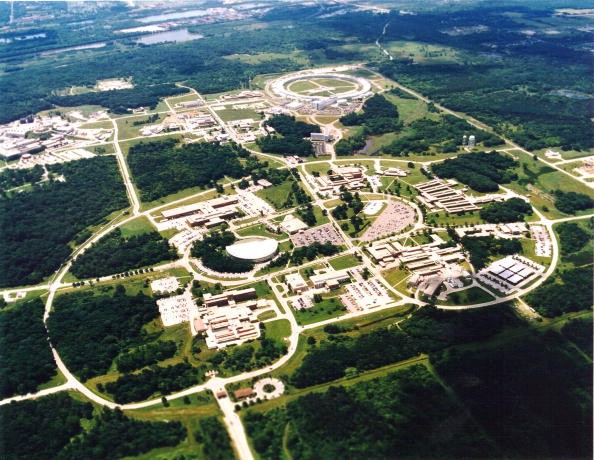Through the use of quantum computing, the United States has laid the groundwork for a "virtually unhackable" internet.
Last Thursday, the Department of Energy officials reported on a blueprint strategy for a national quantum internet. The DOE is working with university and industry researchers, aiming to develop a prototype within this decade.
Laws of quantum mechanics allow a more secure transfer of information compared to conventional networks. The plan is to develop a parallel, more reliable system based on quantum entanglement. In this phenomenon, subatomic particles are in close proximity to the point where their individual quantum states are virtually indistinguishable.

Particles in entanglement share states in different locations--making information between particles transferable. The principle has been used in quantum computing, which is viewed as the next step for computers.
RELATED: The Hows and Whys of the Differences between Quantum, Classical Computing
"One of the hallmarks of quantum transmissions is that they are exceedingly difficult to eavesdrop on as information passes between locations," the DOE said. They added that "scientists plan to use that trait to make virtually unhackable networks."
Early adopters of the quantum Internet include the banking and health service sectors, noting that the technology also has applications for national security and aircraft communication systems.
"Eventually, the use of quantum networking technology in mobile phones could have broad impacts on the lives of individuals around the world," the Department of Energy added.
A Web of Quantum Loop Networks
Seventeen national laboratories under the DOE will be the backbone of the virtually unhackable Internet system, receiving government funding.
"The foundation of quantum networks rests on our ability to precisely synthesize and manipulate matter at the atomic scale, including the control of single photons," said David Awschalom, professor at the University of Chicago and a senior scientist at Argonne National Laboratory.
Back in February, the University of Chicago teamed up with DOE's Argonne National Library to lay down the 52-mile quantum loop. The loop, installed in the Chicago suburbs, has successfully demonstrated entanglement between photons.
"This is an important step forward in harnessing entanglement and building a network to help form the basis of future quantum communication systems," Awschalom said back in February. He expressed the team's excitement with the initial results, noting the flexible communications platform allows them to identify challenges with translating quantum phenomena into the real world.
"An exciting part of this experiment is that it takes place outside of the lab and moves into the real world where there are temperature changes and vibrations and noise," added Paul Kearns, director of the Argonne Laboratory.
The Argonne National Laboratory planned to set up a partnership with the Fermi National Accelerator Laboratory to develop a two-way quantum link network. Once implemented, the two Illinois-based laboratories could lead a cross-country, lab-led quantum internet system.
In the recent DOE press conference, University of Chicago President Robert J. Zimmer has emphasized the role of Chicago in quantum technology development. "The combined intellectual and technological leadership of the University of Chicago, Argonne, and Fermilab has given Chicago a central role in the global competition to develop quantum information technologies," Zimmerman said.
.@ScienceUnderSec joins Argonne, @Fermilab, @UChicago and others to unveil the blueprint for America's Quantum Internet at 'Launch to the Future: Quantum Internet' Event - https://t.co/G8dop2YmNW pic.twitter.com/b86fucgEmg — Argonne National Lab (@argonne) July 24, 2020
The development of a quantum-based internet network is in line with the Department of Energy's initiative to develop the National Quantum Initiative Act, signed by President Donald Trump back in December 2018.
RELATED: Scientists Successfully Achieves First-Ever Quantum and Data Teleportation in Human History
© 2025 ScienceTimes.com All rights reserved. Do not reproduce without permission. The window to the world of Science Times.












